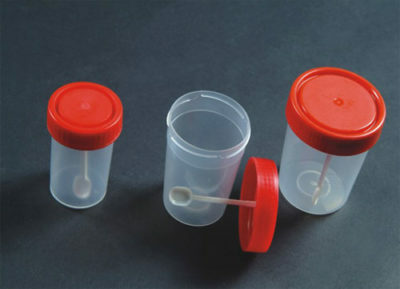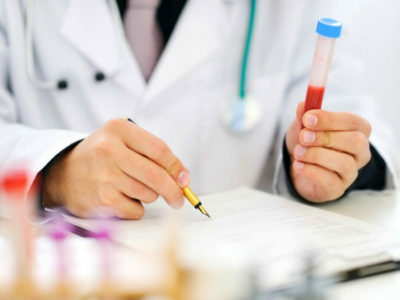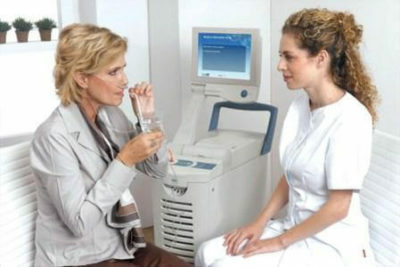1 The essence of the study
Analysis on the coprogram is necessary in order to detect diseases or pathologies in the following organs and systems of the human body:
Do you have gastritis?
GALINA SAVINA: "How easy is it to cure gastritis at home for 1 month. A proven method - write down a recipe. ..!"Read more & gt; & gt;
- Stomach.
- Intestine.
- Pancreas.
- Liver.
- Duodenum.
- Gastrointestinal tract.
Collected feces for analysis allows you to find out how the digestive organs work, to presume or diagnose a disease, to control the development of the disease and its treatment.

It is recommended to read
- What is the biochemical blood test done for?
- Decoding of the results of the
- coprogram. How is scrape taken for enterobiasis in adults?
- Effective agent for gastritis and gastric ulcer
. The program allows to diagnose the following pathologies:
- Congenital disorders of the digestive system.
- Hereditary disorders in the structure of organs.
- Dysfunction of the stomach and intestines, which often manifests itself in accelerated absorption of food.
- Presence of spastic, allergic and ulcerative colitis.
The study is conducted for adults and children, which is convenient when other diagnostic methods can not be used for certain reasons.
Collect material for coprogram need if there is a need for diagnosis of diseases or evaluation of treatment results, its effect on other organs.
2 Preparatory stage
How to take the test correctly? The stool condition depends on many factors, in particular:
- supply;
- drug use;
- lifestyle, etc.
Therefore, to get true results for the analysis, you need to prepare carefully and properly collect the feces. The training scheme will be based on dietary nutrition. To do this, you need to remove the proteins, fats and carbohydrates from the diet a few days before the diagnosis, as a result of which it is possible to obtain correct analyzes of various pathologies.
Usually, the doctor prescribes one of the two diets - Schmidt or Pevzner - before taking the test. They are a short-term and effective means to properly prepare for the delivery of a coprogram.
Pevsner's diet is a normal mixed food, which should load the digestive organs as much as possible. To keep to a diet, you need to eat the following foods every day( daily caloric load will be 3,250 kcal):
- White and black bread: 400 g.
- Fried meat: 250 g, only with a piece.
- Oil - 100 g.
- About 40 g of sugar.
- Porridge: buckwheat and rice.
- Fried potatoes.
- Sauerkraut.
- Salad from cucumbers.
- Compote of dried fruits.
- Fresh apples.
-
 IMPORTANT TO KNOW! Gastritis? Ulcer? To have a stomach ulcer not turned into cancer, drink a glass. ..Read the article & gt; & gt;
IMPORTANT TO KNOW! Gastritis? Ulcer? To have a stomach ulcer not turned into cancer, drink a glass. ..Read the article & gt; & gt;

The diet allows you to detect pathology and dysfunction in other digestive organs.
Schmidt's diet is more sparing and low calorie, which is about 2200 calories per day. The daily diet includes products such as:
- Milk( 0.5 L).
- Eggs cooked soft-boiled.
- 125 grams of lightly roasted minced meat.
- Mashed potatoes: about 200-250 g.
- Viscous broth from oatmeal.
- White bread or rusks: 100 g.
- Oil.
Schmidt's diet promotes good digestion of food, and undigested remnants of food are not found in feces.
From the diet, a doctor can exclude foods that have iron, which is done if there is a suspicion of internal bleeding in the organs of the digestive system. Usually, the diet excludes meat, fish, green vegetables, tomatoes, green onions and Bulgarian pepper.
If this is not done, then these products will give a false positive response to latent bleeding. But the ration from this will not become more scarce, you can eat porridges cooked on milk, bread, dairy products. Excluded for a time and drugs, which include iron or other drugs that can stain feces. Usually it is bismuth, barium preparations.
-
 Gastroenterologist. VAZHENOV: "I beg you, if you began to worry about abdominal pain, heartburn, nausea, do not do gases in any case. .."Read more & gt; & gt;
Gastroenterologist. VAZHENOV: "I beg you, if you began to worry about abdominal pain, heartburn, nausea, do not do gases in any case. .."Read more & gt; & gt;

3 Material Handling and Results Received
Before the procedure, the physician should explain to the patient that the feces must be collected only after natural defecation has occurred. Not suitable for analysis is the material that was obtained after the enema, the intake of laxatives, the introduction of rectal suppositories, drugs affecting the motor activity of the intestine.
In feces that are collected for analysis, no foreign matter should be present:
- urine;
- menstrual blood;
- discharge from the urogenital organs.
Therefore, feces removal at home is done only after showering. Collect the feces in clean and necessarily dry dishes using a spatula.
Special plastic containers are sold in pharmacies, which are sterile. His material for the survey is filled by one third and is immediately taken to a hospital or laboratory. The material should be delivered there no later than 8-12 hours after the fence.

If this can not be done, then the stool in a closed container should be placed in a refrigerator or other cool place.
Analysis should not be given if women have menstrual discharge, or a diagnostic examination of the intestine has been completed. Most often this is a radiography or a colonoscopy, in which special contrast substances are used that can stain feces.
ADVICE FROM THE MAIN GASTROENTEROLOGIST
Korotov SV: "I can recommend only one remedy for the rapid treatment of Ulcer and Gastritis, which is now recommended by the Ministry of Health. .." Read testimonials & gt; & gt;
Also the sampling of the material for the coprogram is not done after the enema. We need to wait 2-3 days to collect the feces and take it to the laboratory.
Cal is studied in several ways, which allows obtaining reliable results about the state of the organs of the digestive system and tract, discovering hidden pathologies. Therefore, in the form according to the results of the analysis, several indicators corresponding to microscopic, biochemical and physical( macroscopic) studies will be noted.
In particular, the stool consistency, its shape, color, odor, acidity, mucus, blood, undigested food, reaction to protein, bilirubin, latent blood, sterocilin, etc. are studied.
Among the main results of the analysis is worth noting the following. If the stool is colorless, then the patient is diagnosed with cholelithiasis. Positive analysis for latent blood can detect gastric ulcers, liver cirrhosis, hemorrhoids, ulcerative colitis, dysentery.
Change in odor indicates the presence of chronic stage pancreatitis. Carbohydrate analysis in babies can detect lactase deficiency. Mucus says that dysbacteriosis and salmonellosis develops.
- 1 Essence of the study
- 2 Preparatory stage
- 3 Material delivery and results
Many patients ask about what a coprogram is, how to correctly pass this analysis. Before the study, you need to know how to collect the feces correctly, so as not to get distorted results. This will lead to the fact that the doctor will put the wrong diagnosis, and then appoint an ineffective therapy, which will not lead to a positive result.



